- ニュース一覧
- Autumn and Winter on Fukushima Tables / 福島の秋と冬の食卓(日進堂印刷所)- 2025.11.10(月) 09:00
Autumn and Winter on Fukushima Tables / 福島の秋と冬の食卓
日進堂印刷所
2025.11.10(月) 09:00
For many people who travel the world, experiencing local cuisine is one of the greatest joys. You might have grown up eating certain foods without giving them much thought, but they can feel like an exciting discovery to someone from another country. As for me, I've been interested in Japanese preserved foods since I came to Japan.
世界を旅する人にとって、現地でふるまわれる食事は何よりの体験となるでしょう。皆さんが子どもの頃から何気なく食べていたものだとしても、外国の人にとっては大きな驚きがあるかもしれません。私は来日した時から日本の保存食に興味がありました。
With the arrival of late autumn, a variety of preserved foods begin to appear on dining tables across Fukushima. Winters here used to be much harsher than they are now – I’ve heard there were times when snow piled up to the second floor. In preparation for those winters, people worked hard in autumn to process the vegetables and fruits they had harvested. My home country, Belarus, has a similar climate to Fukushima, and Belarusians also preserve vegetables and fruits from summer to autumn by making pickles and compotes. However, some of Fukushima's traditional winter preserved foods were completely new to me. Let me introduce you to a few I’ve encountered here.
晩秋の訪れとともに、福島の食卓には様々な保存食が並びます。昔の福島の冬は今より厳しく、雪が建物の2階まで積もったこともあったそうです。そのような冬に備え、秋には収穫した野菜や果物の加工に励みました。私の故郷ベラルーシも福島に似た気候で、夏から秋にかけて収穫した野菜や果物でピクルスとコンポートを作りますが、福島の冬の保存食には想像もしなかったものもありました。今回は、私の出合った福島県の印象的な保存食をご紹介します。
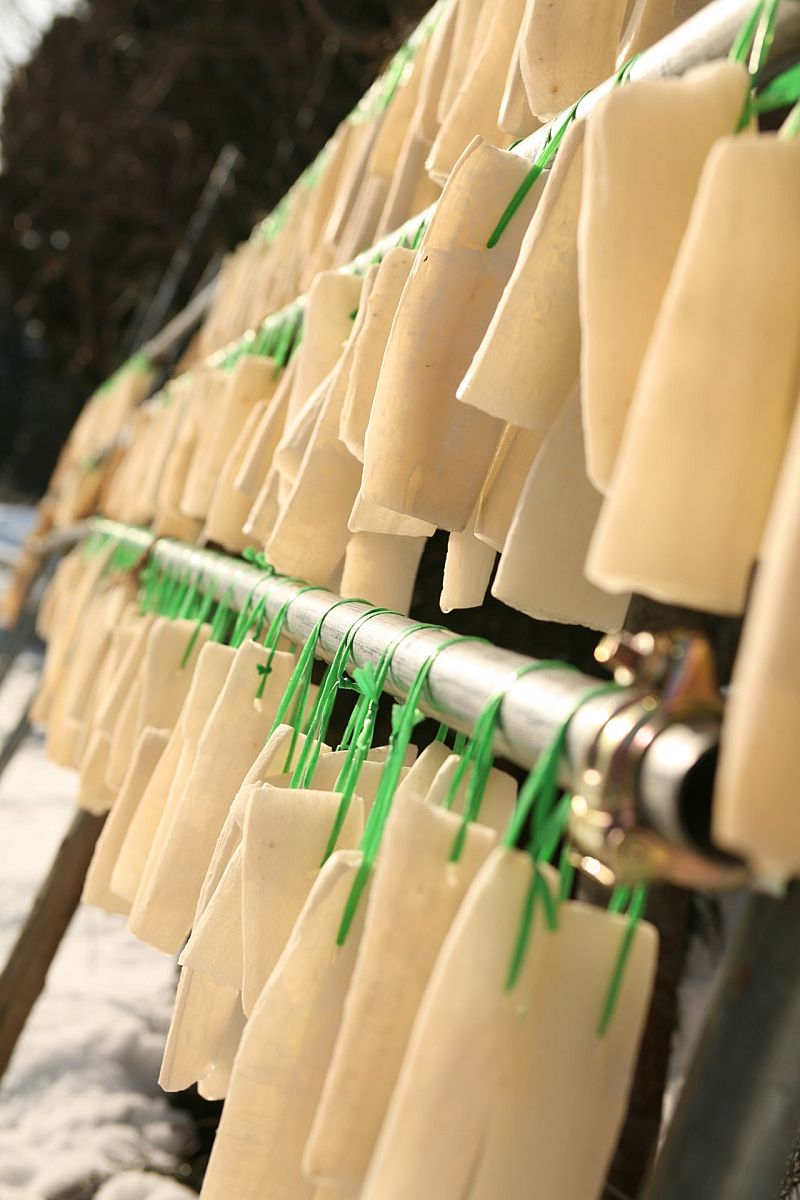
Freeze-dried daikon (“Shimi-daikon”) / 凍み大根
“Shimi-daikon” (freeze-dried Japanese radish) is a traditional winter food. Daikons harvested in the fall are peeled, lightly boiled, sliced, and then threaded onto long bamboo skewers. Each skewer is hung on an outdoor drying rack to air-dry. To be honest, when I first saw the sliced “shimi-daikon”, I thought it was a loofah sponge. Another method involves piercing holes in the daikons, threading a string through, and hanging them outside. I've helped make “shimi-daikon” this way, and it was physically exhausting – it made me appreciate the value of freeze-dried foods.
The daikons freeze on cold nights and thaw during the day, gradually shrinking as they dry. By slowly drying naturally over one or two months, the moisture is removed, leaving light, easy-to-to store “shimi-daikon”. When cooking, the dried pieces are rehydrated in hot or cold water and used in simmered dishes, miso soup, “oden”, and more. Freeze-dried daikon absorbs liquid well and develops a supple, chewy texture. I'm thinking about adding it to “oden” this winter.
凍み大根は、昔からある冬の保存食の一つです。秋に収穫した大根は、皮をむいて軽く下茹でし、輪切りにして長い竹串に数枚ずつ刺し、串ごとに屋外の干し棚に掛けます。それを初めて見たときは、「ヘチマのスポンジかな?」と思ってしまいました。また、大根に穴を開けてひもを通し、外の横木にぶら下げて干す方法もあります。私はこの方法で凍み大根づくりを手伝ったことがあるのですが、手間がかかり疲れた記憶が残っています。凍み大根のありがたさがわかりました。
大根は寒い夜に凍り、昼に溶けることを繰り返して徐々に縮み、じっくり自然乾燥することで水分が抜け、1〜2カ月で軽くて保存しやすい凍み大根になります。調理するときはお湯か水で戻し、煮物、味噌汁やおでんなどに使います。凍み大根は汁をよく吸い込み、しなやかでほどよい弾力のある食感になります。この冬、おでんに入れて味わってみたいと思います。
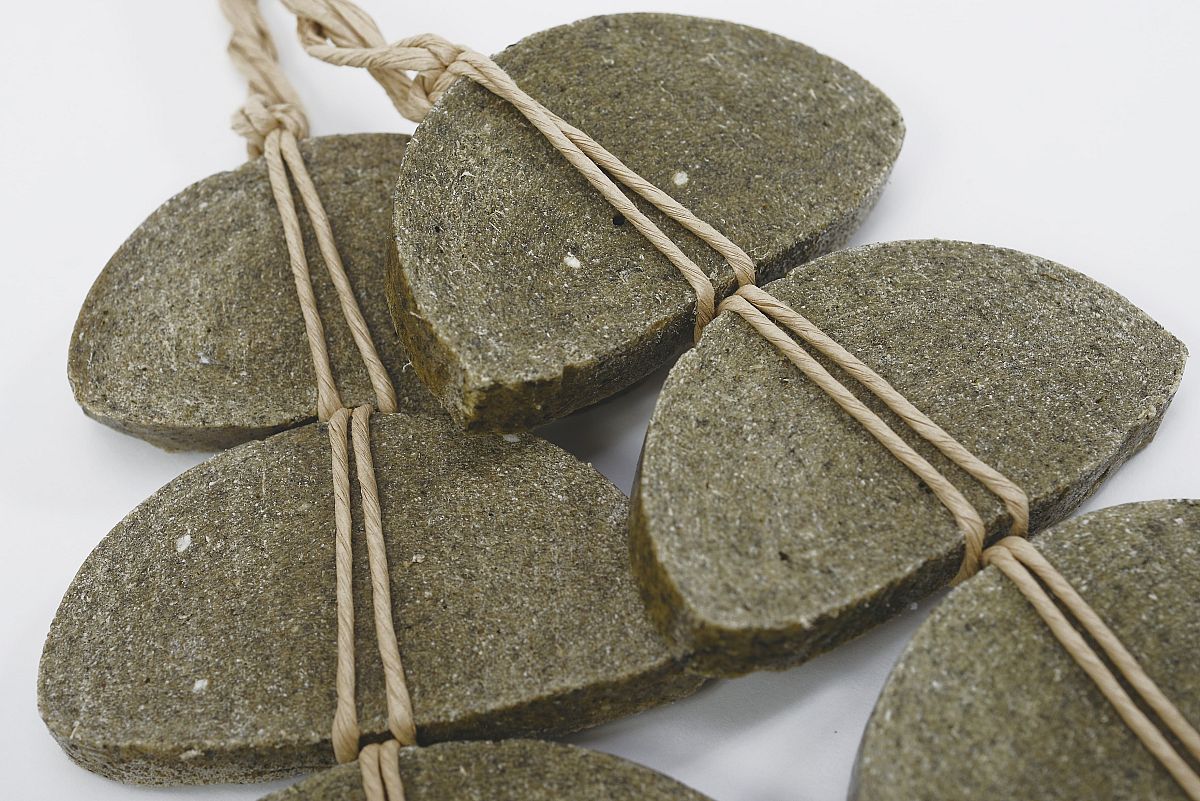
Freeze-dried mochi (“Shimi-mochi”) / 凍み餅
Like daikons, freeze-dried mochi are made by exposing them to the cold wind and slowly drying them, and they are typically prepared at the beginning of the year. “Shimi-mochi” have long been eaten throughout Fukushima Prefecture but are particularly famous in the Aizu region and the Abukuma Highlands. Glutinous or non-glutinous rice is steamed (sometimes with the addition of mugwort or greater burdock leaves) to create large, elongated mochi. After a few days, the slightly hardened mochi are cut into pieces, braided into strings, and hung outdoors to dry.
To cook “shimi-mochi”, you first need to soak them in water for about half a day, but the effort is well worth it. The rehydrated mochi can be grilled with soy sauce and sugar or enjoyed with “kinako” (roasted soybean flour). The first time I tried freeze-dried mochi, a Japanese friend seasoned and grilled it for me, and the preparation and flavor reminded me of French toast. Also, the shape of “shimi-mochi” is similar to rye bread we eat daily in my home country, so it feels wonderfully familiar.
凍み餅は、凍み大根と同じく寒風にさらし乾燥させて作る餅で、年始に作るのが一般的です。凍み餅は福島県全域で昔から食べられていますが、特に会津地方と阿武隈高地のものがよく知られています。うるち米や餅米を蒸し(場合によってヨモギやごぼうの葉を加え)、大きく細長い餅を作ります。数日後に少し固まった餅を切りわけ、ひもに編んで屋外に吊るして乾燥させます。
凍み餅を調理する時は、まず半日ほど水につけて戻す必要がありますが、手間をかけるだけの価値があります。戻した餅を醤油と砂糖で焼いたり、きなこで和えたりして味わいます。ちなみに、私が初めて凍み餅を食べたのは、日本人の友人に味付けして焼いてもらった時でしたが、作り方と風味からフレンチトーストを思い浮かべました。形も母国でほぼ毎日食べるライ麦パンに似ているので、親近感があります。
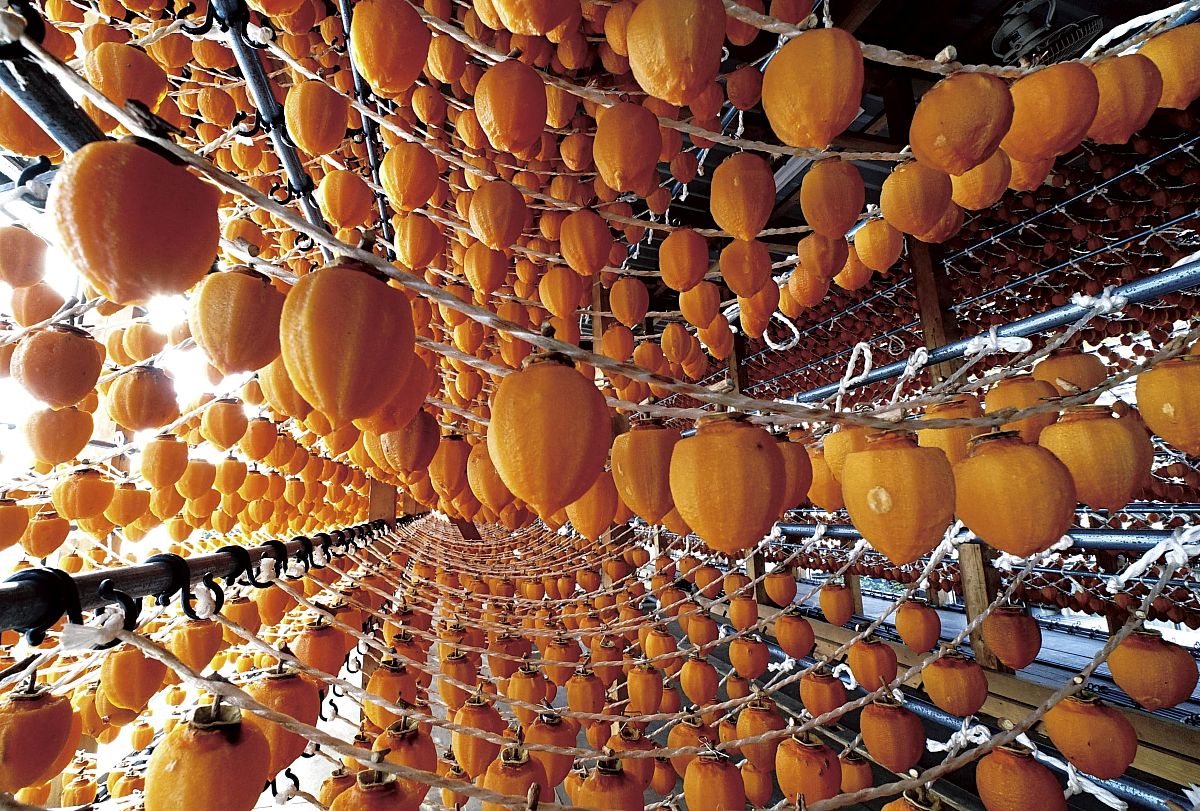
Dried persimmon (“anpo-gaki”) / あんぽ柿
I love "anpo-gaki" for their vibrant color. While most dried persimmons tend to darken over time, "anpo-gaki" retain their natural color, even after weeks of drying. I've always been fond of persimmons, having eaten them often in my hometown in Belarus (by the way, even overseas markets refer to persimmon varieties imported from East Asia as "kaki"). After coming to Fukushima, I fell in love with the winter scenery of Aizu, beautifully captured in the works of renowned artist Saitō Kiyoshi. His paintings often feature red persimmons hanging from trees, and this familiar landscape only deepened my love for the fruit.
In the northern parts of Fukushima Prefecture (especially Date City), vibrant rows of persimmons lined up on drying racks have become a traditional winter sight. Harvested in October, each persimmon is ripened, peeled, sulfur-fumed, and then left to dry outdoors for about a month. Unlike other dried persimmons, "anpo-gaki" from Date retain a high level of moisture to preserve their color, while the inside remains semi-raw and juicy. Their sugar content is moderate, giving them a refined, gentle sweetness. Like the other preserved foods I’ve introduced above, they are particularly delicious because of Fukushima's climate, since large temperature differences help develop their outstanding flavor and texture.
"Anpo-gaki" are not only a nutritious and flavorful dessert, but can be also enjoyed in more elaborate forms – for example, in fruit sandwiches or as canapés combining persimmons with cheese on crackers.
私があんぽ柿を好きな理由は、鮮やかな色をしているからです。他の干し柿はくすんだ色になりがちですが、あんぽ柿は時間が経っても変わらない印象です。もともと柿が好きで、故郷のベラルーシでもよく食べていました(ちなみに、海外の市場でも東アジアから輸入された柿の品種を「カキ」と呼びます)。福島に来て、冬の会津を描いた版画家として有名な斎藤清の作品がとても好きになりました。作品の一部に、木になる赤い柿が描かれていて、その親しみやすい風景を通して柿への関心が深まりました。
県北の市町村(特に伊達市)では、干場に並ぶ鮮やかな柿が冬の風物詩となっています。10月に収穫した柿一つ一つを熟させ、皮をむき、硫黄燻蒸をしてから干場で約1カ月乾燥させます。伊達のあんぽ柿は他の干し柿と違い、水分を多めに残して仕上げることで色のくすみを防いでいて、中身は半生でジューシーです。また、糖度が高すぎず、上品な甘さを楽しめます。先にご紹介した保存食と同様に、寒暖差が大きい福島の気候でおいしく仕上がります。
さらに、あんぽ柿は栄養豊かなデザートとしてはもちろん、フルーツサンド、そしてクラッカーにチーズを合わせたカナッペなど、ひと手間かけてスイーツとして味わうのもおすすめです。

お問い合わせは日進堂グループ各社まで
株式会社 日進堂印刷所 電話 024-594-2211(代)
トキワ印刷 株式会社 電話 0248-75-2145
株式会社 進和クリエイティブセンター 電話 024-594-2145
株式会社 エス・シー・シー 電話 024-593-0500
株式会社 Like-s 電話 024-573-8063
For inquiries in English, please contact the following email address: info@nisshindo.co.jp
※Please contact a sales representative for the estimate about translation.
※翻訳などに関してのお見積りは担当営業までお問い合わせください。
企業情報 企業情報
日進堂印刷所(印刷業)
〒 9602194 福島県福島市庄野字柿場1-1
TEL : 024-594-2211
ホームページ : https://www.nisshindo.jp/
ピックアップ記事(日進堂印刷所)
ピックアップ記事(新着)
12月14日、癒しかふぇwith tetoteを開催します❣️【会場Café tetote(福島市)
Postbox-newsR Provided by Like-s
2025.11.21(金) 07:30
〔11月21日クマ目撃情報〕磐梯町大字大谷字雨沼東地内磐越西線上
ラジオ福島
2025.11.21(金) 07:13
〔11月20日クマ目撃情報〕福島市桜本字新開前地内と福島市下鳥渡字大平南地内
ラジオ福島
2025.11.21(金) 06:54
〔11月20日クマ目撃情報〕喜多方市で2件、西会津町・郡山市・国見町で各1件。
ラジオ福島
2025.11.21(金) 06:30
きょうは何の日 フライドチキンの日
ラジオ福島
2025.11.21(金) 00:01
© newsR.jp.

![newsR.jp[ニュースアール]](/img/logo_kana.svg)
![newsR.jp[ニュースアール] newsR.jp[ニュースアール]](/img/head_logo.svg)
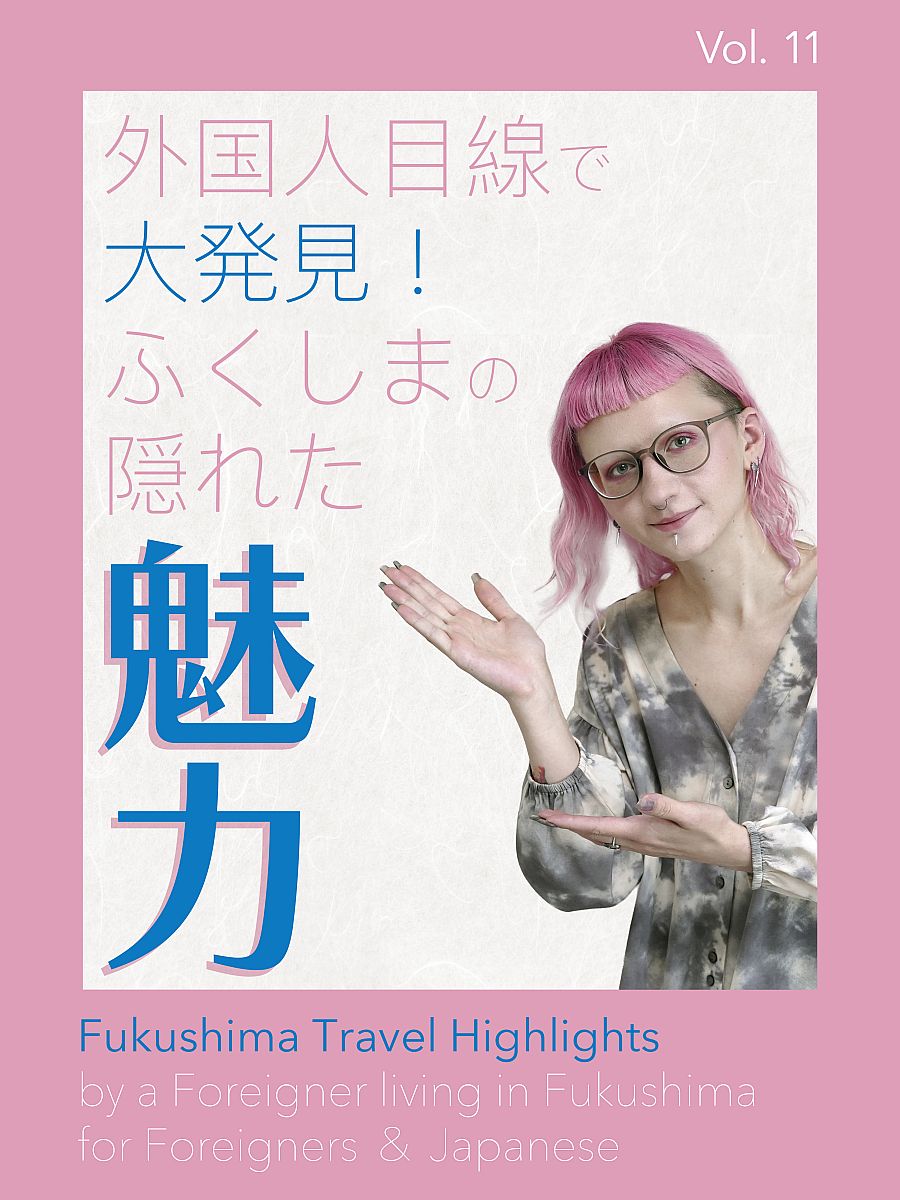
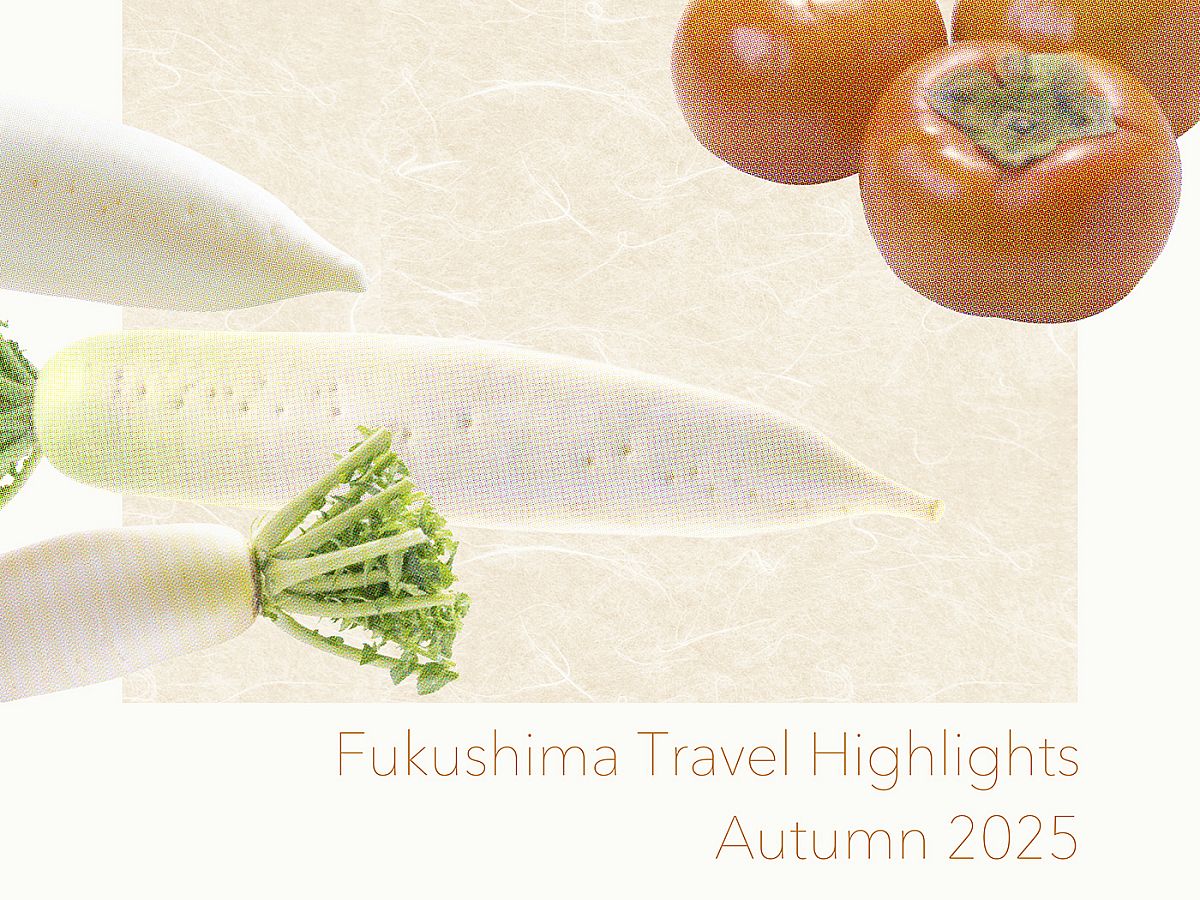



![ふくしまの気になる情報を発信 newsR.jp[ニュースアール]](/img/foot_logo.svg)
